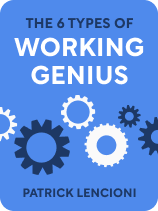

This article is an excerpt from the Shortform book guide to "The 6 Types of Working Genius" by Patrick Lencioni. Shortform has the world's best summaries and analyses of books you should be reading.
Like this article? Sign up for a free trial here.
What is project execution? What’s the best way to get your project off the ground?
The project execution phase is the most critical phase to pay attention to. It’s the point in the project where you take action on your ideas and troubleshoot anything that may fail.
Continue reading if you want to successfully survive the execution phase, according to Patrick Lencioni’s The 6 Types of Working Genius.
Project Execution
The project execution phase is critical. This is the time to troubleshoot ideas raised in the previous phase and evaluate their integrity and applicability. This is also the point where the organization must fully commit to the project.
Organizations that dedicate ample time and resources to this phase tend to experience both expedited and positive outcomes. However, according to Lencioni, set-up is typically the most neglected of the three stages of work. When teams rush this phase, they tend to:
- Deliver under-performing outcomes
- Forfeit critical steps that can aid in realizing projects
- Create cycles of mutual blame and resentment among the teammates who lead the previous brainstorming phase and subsequent follow-through phase
Maintaining Momentum
Lencioni’s execution phase is, in many ways, all about momentum. But what are some methods for maximizing this and keeping the lifeblood flowing through a project?
- First, experts suggest consistently reminding your team about the why. Reconnect them at each stage of effort with the ultimate significance of their work: its end result or purpose.
- Keep creative juices flowing throughout the life of the project. Although Lencioni emphasizes this in his first phase, consider challenging your team to continue taking conceptual risks during this phase as well. Encourage it to experiment and adapt working models.
- Share small, incremental triumphs with your team; this helps assure them things are moving forward. Give them concrete and satisfying proof of these victories.
Intelligence #1: Vetting Ideas
The person with this intelligence is the one who determines if the proposals suggested during the brainstorming stage meet the criteria of reality. In other words, are they achievable? This person might be the one to question the feasibility of producing your new item on a competitive scale or warn about how much time and money will go into its development.
This intelligence is passive because it requires the existence of ideas outside itself to evaluate; yet, this person is vital in helping organizations select ambitious yet realistic projects. These are the people in your organization who you constantly look to for their intuition and honesty. The person with this intelligence might point out that supplies of your new alloy are not always reliable, making long-term use an issue, or that engineers have already tried and failed to use it. She may suggest that the company find its own supply source and specific engineering talent to make that avenue safe.
Building Transparency and Trust
Lencioni insists that one of the factors that makes the Vetting Ideas intelligence so critical is its honesty—a willingness to call things for what they are. But there are a number of concerns that can inhibit employees from exhibiting this same kind of frankness on a regular basis:
- A fear of offending others (especially their boss!)
- Anxiety that they could face blowback for their feedback
- Cynicism that such constructive criticism will actually change anything
To mitigate these concerns, managers should assure team members not only that they are receptive to critical feedback, but also that managers can meet their personal and organizational goals far more easily with this input.
Intelligence #2: Mobilizing People
The teammate with this intelligence encourages teammates to buy into projects and is indispensable to getting almost any process off the ground. The intelligence is active because it generates energy and enthusiasm and then passes them along to others. This teammate will get everyone oaring in the same direction and to the same tempo, ensuring that effort is concerted and morale is strong. She will relay to your entire staff how revolutionary your new razor design is (how your organization is the first to use that alloy, in particular) and that the price point you’re going to offer will change the entire market.
These attributes make this intelligence of motivating critical to the central phase of work; in essence, it is a cheerleader archetype.
(Shortform note: In The Tipping Point, Malcolm Gladwell conjures a similar archetype to the Mobilizer whom he calls the “Salesman.” Gladwell’s Salesman gets people enthusiastically behind these ideas, leaning on a keen mastery of non-verbal communication, social cues, and emotional reflexes. And although Gladwell’s Salesmen function to spread ideas that help create social epidemics (when ideas, messages, or products spread quickly through the public masses) while Lencioni’s mobilizer spurs action on a project, the similarities suggest that they may draw on the same social-emotional strengths.)

———End of Preview———
Like what you just read? Read the rest of the world's best book summary and analysis of Patrick Lencioni's "The 6 Types of Working Genius" at Shortform.
Here's what you'll find in our full The 6 Types of Working Genius summary:
- The six types of working intelligence that successful teams need
- How to identify which traits your team members have
- How to apply the six types of genius to bolster workflow and well-being






